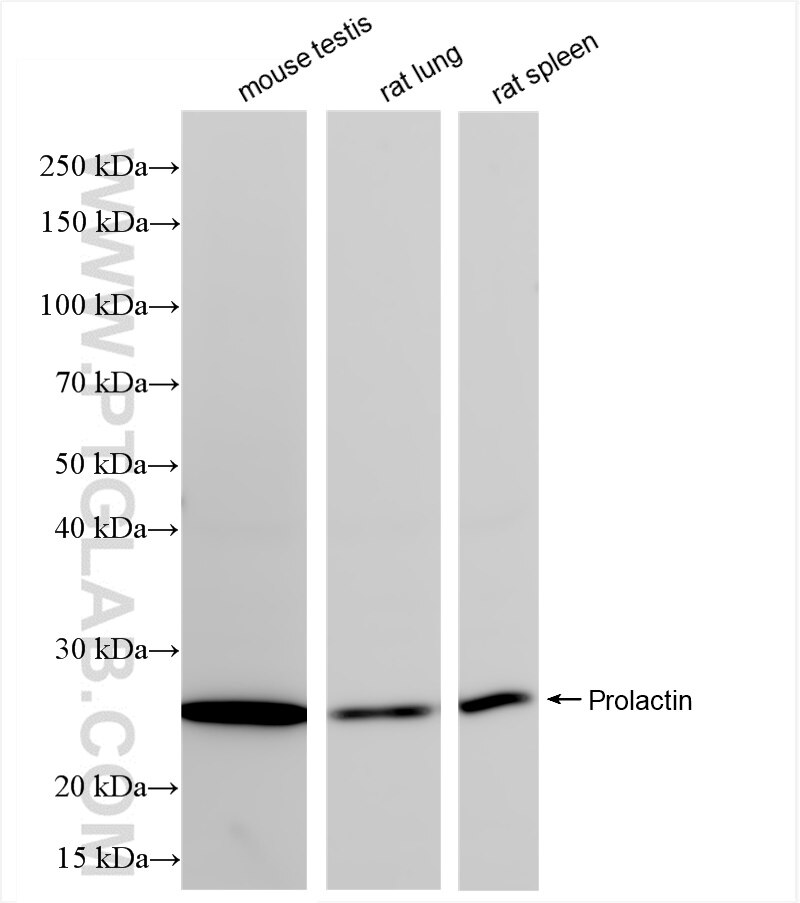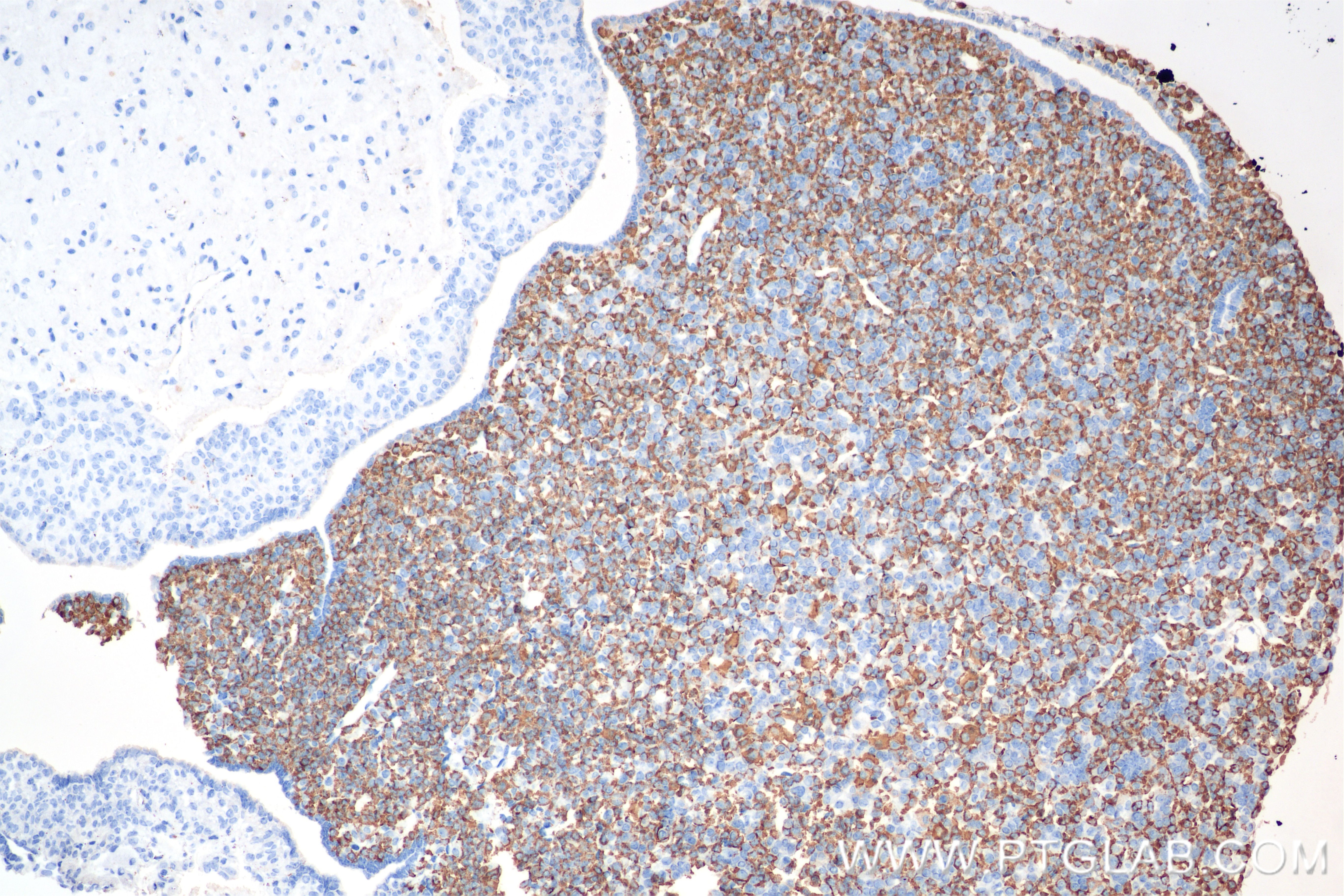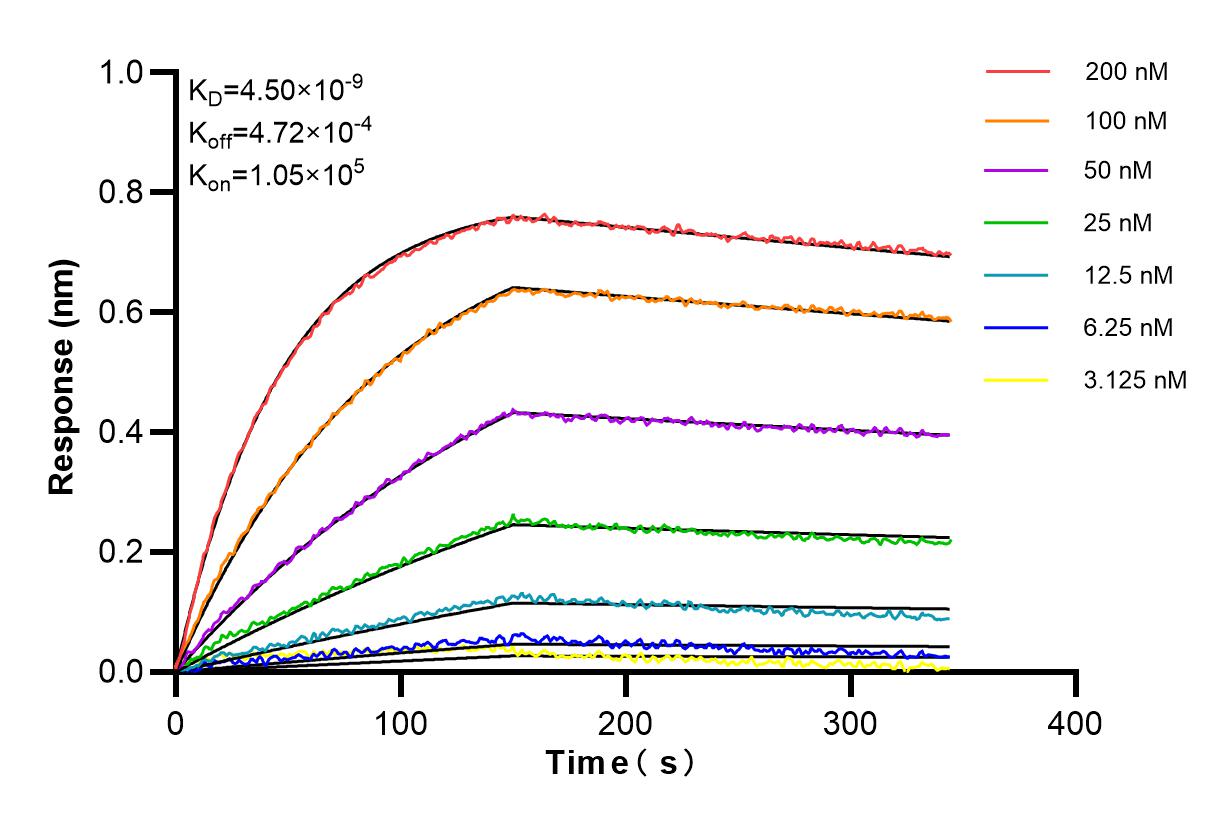Validation Data Gallery
Tested Applications
| Positive WB detected in | mouse testis tissue, rat lung tissue, rat spleen tissue |
| Positive IHC detected in | mouse pituitary gland tissue, mouse spleen tissue Note: suggested antigen retrieval with TE buffer pH 9.0; (*) Alternatively, antigen retrieval may be performed with citrate buffer pH 6.0 |
| Positive IF-P detected in | mouse pituitary gland tissue |
Recommended dilution
| Application | Dilution |
|---|---|
| Western Blot (WB) | WB : 1:500-1:2000 |
| Immunohistochemistry (IHC) | IHC : 1:2500-1:10000 |
| Immunofluorescence (IF)-P | IF-P : 1:500-1:2000 |
| It is recommended that this reagent should be titrated in each testing system to obtain optimal results. | |
| Sample-dependent, Check data in validation data gallery. | |
Product Information
85042-1-RR targets Prolactin in WB, IHC, IF-P, ELISA applications and shows reactivity with mouse, rat samples.
| Tested Reactivity | mouse, rat |
| Host / Isotype | Rabbit / IgG |
| Class | Recombinant |
| Type | Antibody |
| Immunogen |
CatNo: Eg0937 Product name: recombinant mouse Prolactin protein Source: mammalian cells-derived, pHZ-KIsec-C-6*HIS Tag: C-6*HIS Domain: 32-228 aa of NP_035294.2 Sequence: LPICSAGDCQTSLRELFDRVVILSHYIHTLYTDMFIEFDKQYVQDREFMVKVINDCPTSSLATPEDKEQALKVPPEVLLNLILSLVQSSSDPLFQLITGVGGIQEAPEYILSRAKEIEEQNKQLLEGVEKIISQAYPEAKGNGIYFVWSQLPSLQGVDEESKILSLRNTIRCLRRDSHKVDNFLKVLRCQIAHQNNC 相同性解析による交差性が予測される生物種 |
| Full Name | prolactin |
| Calculated molecular weight | 26 kDa |
| Observed molecular weight | 25 kDa |
| GenBank accession number | NP_035294.2 |
| Gene Symbol | Prl |
| Gene ID (NCBI) | 19109 |
| Conjugate | Unconjugated |
| Form | |
| Form | Liquid |
| Purification Method | Protein A purfication |
| Storage Buffer | PBS with 0.02% sodium azide and 50% glycerol{{ptg:BufferTemp}}7.3 |
| Storage Conditions | Store at -20°C. Stable for one year after shipment. Aliquoting is unnecessary for -20oC storage. |
Background Information
Prolactin is also named as PRL and belongs to the somatotropin/prolactin family. The proteins encoded by PRL are secreted into the cell surroundings. And they are abundantly expressed in pituitary gland, adenohypophysis, decidua and testis. Indeed, chemically, prolactin appears in a multiplicity of posttranslational forms ranging from size variants to chemical modifications such as phosphorylation or glycosylation. It is not only synthesized in the pituitary gland, as originally described, but also within the central nervous system, the immune system, the uterus and its associated tissues of conception, and even the mammary gland itself (PMID: 11015620). Prolactin acts primarily on the mammary gland by promoting lactation (PMID: 30546056).
Protocols
| Product Specific Protocols | |
|---|---|
| WB protocol for Prolactin antibody 85042-1-RR | Download protocol |
| Standard Protocols | |
|---|---|
| Click here to view our Standard Protocols |






